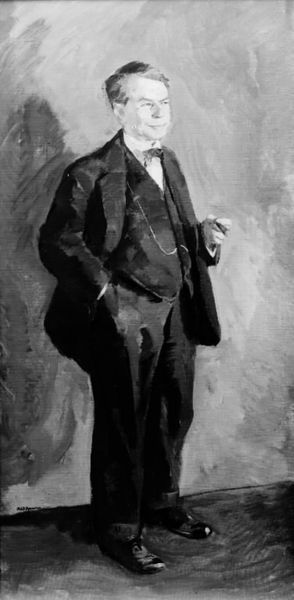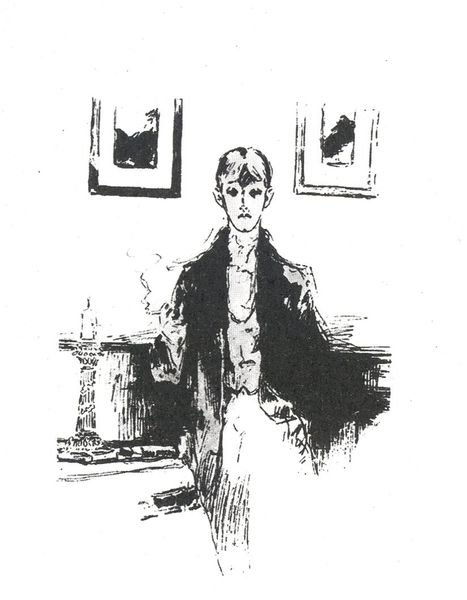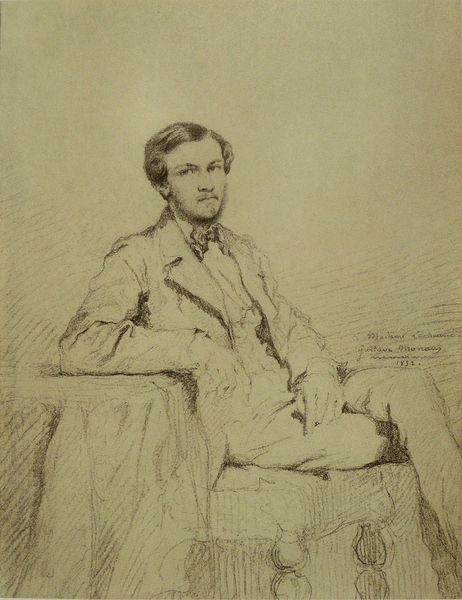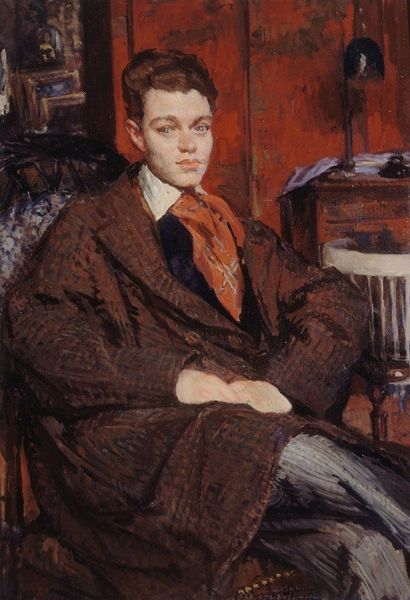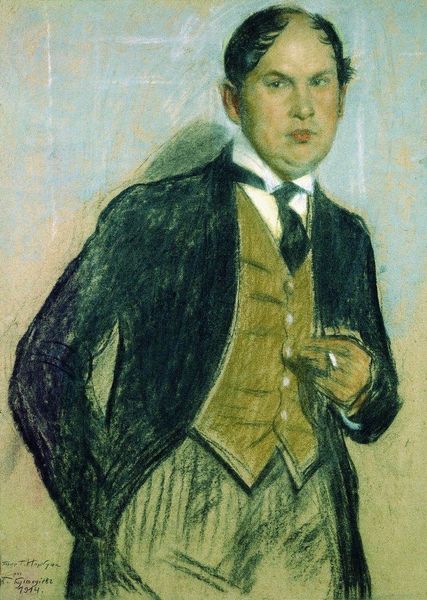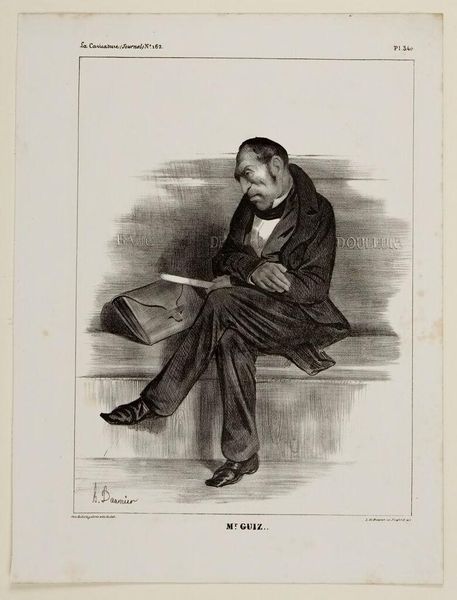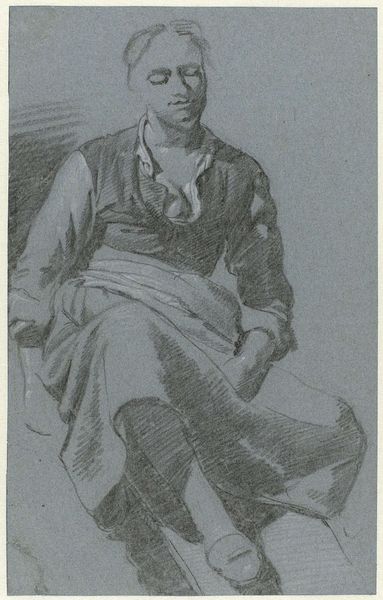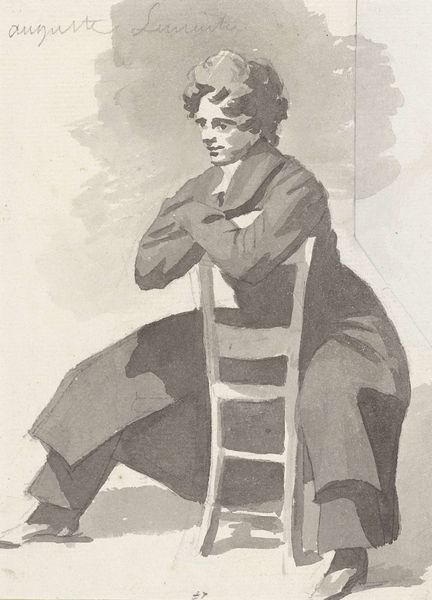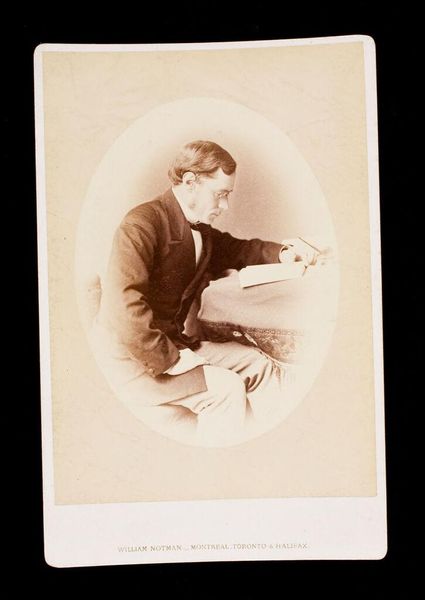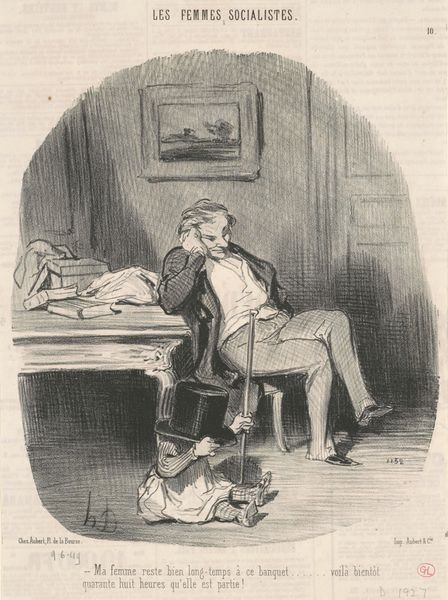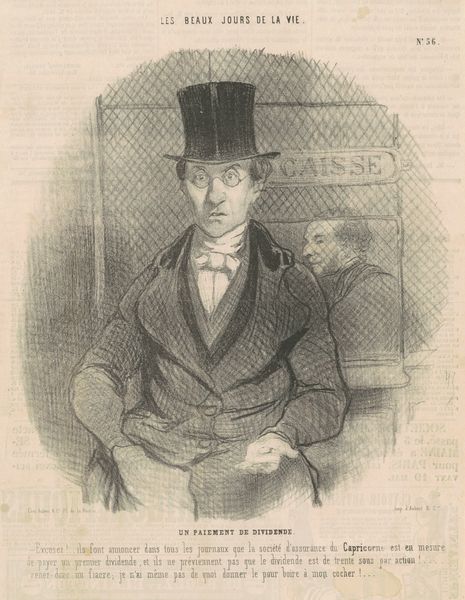
#
portrait
#
facial expression drawing
#
caricature
#
portrait reference
#
famous-people
#
male-portraits
#
surrealism
#
portrait drawing
#
tattoo art
#
facial portrait
#
surrealist
#
portrait art
#
digital portrait
Copyright: Public domain
Editor: So, this is Boris Kustodiev’s "Portrait of P.L. Kapitza," created in 1926. It’s a striking piece. I'm drawn to the contrast between the figure and the highly decorative setting. It gives it a rather unique and somewhat surreal atmosphere. How do you interpret the symbolism here? Curator: The sharp contrasts do indeed jump out. Look at the domesticity hinted at by the ornate wallpaper and the patterned sofa – and how Kapitza is nestled within that visual framework. It seems to say something about belonging, about identity shaped by environment. Kustodiev often explored themes of Russian identity, even while working in exile. What aspects of Kapitza do you think Kustodiev wanted to capture? Editor: Well, the subject is a scientist, and there seems to be this intent on depicting him with this interiority. Curator: Indeed. The intensity of his gaze suggests an intellectual weight, a mind deeply engaged. Notice how Kustodiev simplifies Kapitza’s form, almost reducing him to essential lines. It reminds me of iconic representations where symbolic meaning is more important than photographic accuracy. Do you think that enhances the work's message? Editor: I see what you mean. It makes it less about Kapitza the individual and more about representing intellectual pursuit more broadly, even an idealized version of it. The simplification seems deliberate, like emphasizing certain traits. Curator: Exactly. It is the artist telling us where the core value lies – in mind and cultural heritage, rather than the purely material. And how the scientist enriches and is, in turn, enriched by these symbols. The patterns are a reminder of home, maybe Russia itself, for the exiled artist. Editor: That’s a rich interpretation. It ties the portrait to Kustodiev's own sense of identity and longing. I now see how those sharp contrasts are symbolic, acting as a commentary about his sense of cultural displacement. Curator: Precisely. It's a portrait not just of Kapitza, but of a time, a place, and the enduring power of visual symbols in preserving memory.
Comments
No comments
Be the first to comment and join the conversation on the ultimate creative platform.

